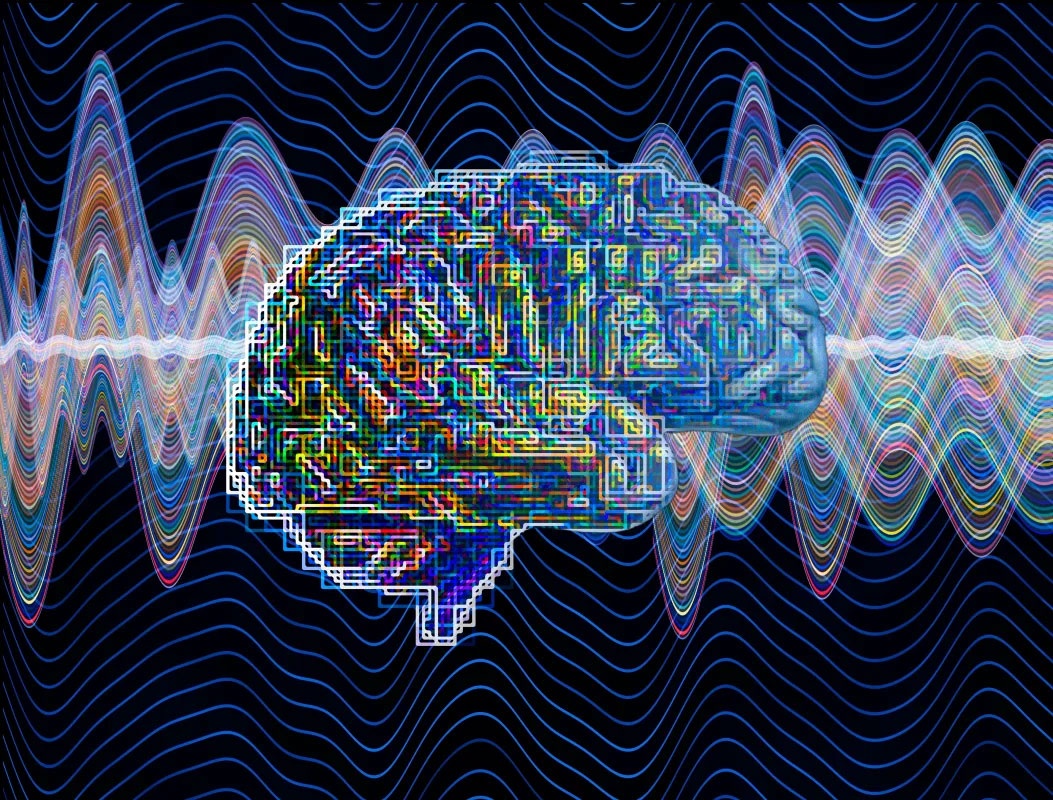Neuroplasticity hacking represents a burgeoning frontier in neuroscience, illustrating the brain’s remarkable ability to adapt and reconfigure itself through targeted interventions. Recent advancements reveal that sound frequencies significantly influence neuroplasticity, facilitating cognitive transformation and emotional well-being. Historical intersections between sound and neuroscience underscore the long-standing importance of auditory stimuli in shaping neural pathways. Consequently, understanding the mechanisms at play not only elucidates how sound impacts brain function but also provides empirical evidence for its therapeutic applications. This exploration promises to enhance our grasp of human adaptability, potentially revolutionizing therapeutic practices and cognitive enhancement strategies.
Understanding Neuroplasticity: The Science of Brain Rewiring
Neuroplasticity, often characterized as the brain’s remarkable ability to reorganize itself by forming new neural connections throughout life, underpins the science of brain rewiring. This phenomenon enables individuals to adapt to new experiences, learn skills, and recover from injuries. Central to neuroplasticity is the concept that the brain is not a static organ; rather, it is dynamic and capable of structural and functional changes in response to various stimuli.
Key mechanisms contributing to neuroplasticity include:
- Synaptic Plasticity: This involves changes in the strength of synapses based on activity levels, allowing for enhanced or diminished communication between neurons.
- Neurogenesis: The formation of new neurons, particularly in the hippocampus, facilitates learning and memory processes.
- Functional Reorganization: Areas of the brain can take over functions typically managed by damaged regions, a critical response observed in rehabilitation scenarios.
As individuals engage in practices such as neuroplasticity hacking, which may include auditory stimuli or sound frequencies, they can actively influence these neural adaptations. Research indicates that targeted sound frequencies can enhance synaptic plasticity and foster cognitive transformation. Consequently, understanding neuroplasticity elucidates the foundational principles behind effective strategies for brain optimization and recovery, paving the way for innovative therapeutic applications.

The Role of Sound Frequencies in Cognitive Transformation
Sound frequencies exert a profound impact on cognitive transformation, primarily through their capacity to modulate neural oscillations. Neuroplasticity hacking capitalizes on this phenomenon to enhance cognitive functions, emotional regulation, and overall psychological well-being. Various sound frequencies, such as binaural beats, solfeggio frequencies, and isochronic tones, act as catalysts for stimulating brain activity.
Significantly, distinct frequencies resonate with different brainwave states:
| Brainwave State | Frequency Range | Associated States | Cognitive Benefits |
|---|---|---|---|
| Delta | 0.5 – 4 Hz | Deep sleep, unconsciousness | Enhanced healing, restful sleep |
| Theta | 4 – 8 Hz | Light sleep, relaxation | Creativity, intuition, emotional healing |
| Alpha | 8 – 12 Hz | Calm, relaxed focus | Stress reduction, improved learning |
| Beta | 12 – 30 Hz | Alert, active thinking | Increased problem-solving capacity |
| Gamma | 30 – 100 Hz | Heightened perception | High-level information processing |
Utilizing sound frequencies within therapeutic contexts enhances neuroplasticity hacking by promoting synaptic connections and facilitating learning processes. For instance, research indicates that alpha and theta waves enhance memory retention and cognitive flexibility, key components in effective learning strategies.
Incorporating sound frequencies into daily routines, such as through meditation or ambient music, not only fosters cognitive agility but also supports emotional health. Through continuous exposure, individuals can effectively rewire their neurological pathways, optimizing brain function in an increasingly demanding world. Thus, sound frequencies emerge as pivotal instruments for unlocking the potential inherent in neuroplasticity hacking.
Historical Context: The Intersection of Sound and Neuroscience
The evolving relationship between sound and neuroscience encapsulates centuries of inquiry, offering profound insights into cognitive transformation. The concept of sound frequencies as a therapeutic agent traces back to ancient civilizations, particularly in their spiritual and healing practices. For instance:
- Ancient Egypt and Greece: These societies utilized music and sound in religious ceremonies, believing that harmonious vibrations could align the body and mind, facilitating mental clarity and emotional resilience.
- Middle Ages: Monastic chants highlighted the medicinal properties of sound, promoting healing through auditory experiences. Neuroplasticity hacking subtly emerged as monks engaged in repetitive chanting, which not only enhanced focus but also reportedly alleviated psychological stress.
Transitioning into the 20th century, researchers began systematically exploring auditory stimuli’s effects on the brain. Pioneering studies revealed that sound influences brainwave patterns, subsequently shaping emotional responses and cognitive behaviors.
This era marked the intersection of auditory phenomena and neuroplasticity science, as:
- Investigations into binaural beats demonstrated their potential in fostering brain synchronization, thus enhancing neuroplasticity.
- Innovations in neuroimaging technologies enabled scientists to visualize sound-induced brain changes, revealing that targeted auditory frequencies could promote neural pathways’ adaptability.
In essence, the historical context of sound and neuroscience illustrates a long-standing awareness of auditory techniques as catalysts for cognitive advancement underscored by the principles of neuroplasticity hacking. This foundational knowledge propels contemporary exploration into sound therapy’s applications in clinical settings, epitomizing the intersection’s enduring relevance and significance.
Mechanisms of Action: How Sound Frequencies Influence Neuroplasticity
Neuroplasticity hacking encompasses the utilization of sound frequencies to facilitate cognitive transformation through targeted brain rewiring. Central to this phenomenon are various mechanisms through which auditory stimuli impact neural pathways.
- Resonance Effects:
- Sound frequencies induce vibrational resonance within specific neural circuits, thereby promoting the activation of dormant synapses.
- Frequencies such as 432 Hz and 528 Hz have been reported to enhance emotional regulation and reduce stress, contributing to enhanced synaptic efficacy.
- Auditory Brainstem Responses:
- Exposure to rhythmic sound patterns correlates with increased auditory brainstem responses, leading to improved sensory processing.
- This enhancement may alleviate cognitive deficits associated with neurodegenerative diseases.
- Dopaminergic Pathway Activation:
- Sound frequencies may stimulate the release of neurotransmitters like dopamine, leading to heightened motivation and learning capabilities.
- Consequently, a consistent auditory regime can foster a positive feedback loop, essential for effective neuroplasticity hacking.
- Synchronization Mechanism:
- The entrainment of brainwave activity to specific frequencies (e.g., binaural beats) promotes a state conducive to learning and memory consolidation.
- Research suggests that synchronized neural oscillations enhance communication between disparate brain regions, facilitating integrative learning processes.
In conclusion, understanding these mechanisms opens avenues for applying sound frequencies in neuroplasticity hacking, paving the way for innovative therapeutic strategies to improve cognitive function and mental health.
You can buy books about Neuroplasticity Hacking from Amazon by clicking here.

Sound therapy has emerged as a significant modality within clinical settings, capitalizing on the concept of neuroplasticity hacking to promote cognitive and emotional enhancements. Various applications underscore its relevance across multiple psychological and physical health domains:
- Anxiety and Stress Disorders: Research illustrates that sound therapy can mitigate symptoms associated with anxiety disorders. For instance, utilizing specific sound frequencies during therapeutic sessions has demonstrated a reduction in cortisol levels, promoting mental resilience.
- Cognitive Rehabilitation: In clinical populations, such as stroke survivors, neuroplasticity hacking manifests through sound therapy by stimulating brain regions responsible for language and motor functions. Structured rhythmic auditory cues facilitate the recovery of speech and motor skills.
- Pain Management: Sound therapy has proven efficacious in chronic pain management. Frequencies that resonate with the body’s cellular structure can elicit relaxation responses, thus reducing the perception of pain and decreasing reliance on pharmacological interventions.
- Sleep Disorders: Patients suffering from insomnia benefit from sound therapy protocols combining binaural beats with ambient noise. Such interventions enhance sleep quality by restructuring brain wave patterns, leading to deeper restorative phases of sleep.
These applications underscore the vast potential of sound therapy as a powerful tool in clinical practice. By harnessing the principles of neuroplasticity hacking, clinicians can create tailored interventions that promote neural adaptability, improve quality of life, and foster long-term psychological and physiological health.
Empirical Evidence: Case Studies and Research Findings
The burgeoning field of neuroplasticity hacking through sound frequencies has garnered significant empirical support, underscoring its potential applications in cognitive enhancement and therapeutic interventions. Numerous case studies and research findings illuminate the mechanisms by which sound influences neural pathways.
- Case Study: Musical Training and Cognitive Development Research by Moreno et al. (2011) demonstrates that individuals who engage in musical training exhibit improved auditory attention and enhanced cognitive flexibility compared to non-musicians. This study suggests that auditory stimulus, in this case music, systematically engages neuroplasticity, facilitating brain rewiring conducive to cognitive advancement.
- Research Findings: Binaural Beats and Anxiety Reduction A study conducted by Lane et al. (1998) explored the effects of binaural beats on anxiety levels. Participants who listened to specific auditory frequencies reported a marked decrease in anxiety symptoms, illustrating the tangible effects of sound frequencies on mental states and their alignment with neuroplasticity hacking principles.
- Clinical Application: Sound Therapy and Stroke Recovery A compelling case from a clinical setting reveals that stroke patients who underwent sound therapy exhibited improved motor function and spatial awareness. This finding elucidates how targeted sound frequencies can expedite neuroplastic changes, thereby enhancing recovery in clinical populations.
In summary, empirical evidence consistently affirms the efficacy of sound frequencies in facilitating neuroplasticity hacking. By targeting auditory pathways, researchers continue to illuminate the intricate relationship between sound and cognitive transformation.
Practical Techniques for Integrating Sound Frequencies in Daily Life
Integrating sound frequencies into daily life necessitates a structured approach to harness the potential of neuroplasticity hacking effectively. By employing practical techniques, individuals can promote cognitive resilience and mental well-being. Below, we delineate several effective methods:
- Sound Meditation:
- Engage in guided sound meditation sessions utilizing specific frequencies (e.g., 432 Hz, 528 Hz) known to induce relaxation and cognitive clarity.
- Utilize binaural beats, where two slightly different frequencies create a perceived tone that fosters deep meditation states.
- Listening to Ambient Music:
- Curate playlists featuring ambient music or nature sounds. Research suggests these sounds can reduce anxiety and stimulate positive neurological changes.
- Particularly beneficial are soundscapes that align with the principles of neuroplasticity hacking by providing calming auditory stimuli.
- Frequency Therapy Devices:
- Invest in devices that emit therapeutic sound frequencies. Regular use can encourage neural adaptation and cognitive enhancement.
- Apply these devices during routine activities, such as working or exercising, to maximize exposure.
- Daily Affirmations with Sound:
- Pair affirmations with specific sound frequencies. This method enhances the emotional impact of affirmations, promoting positive neural pathways.
| Technique | Benefits | Recommended Frequencies |
|---|---|---|
| Sound Meditation | Reduces stress, enhances clarity | 432 Hz, 528 Hz |
| Ambient Music | Lowers anxiety, improves mood | Nature sounds, soothing ambient tracks |
| Frequency Therapy Devices | Enhances cognitive functions | Various therapeutic frequencies |
| Affirmations with Sound | Strengthens positive neural pathways, boosts motivation | Customizable based on intent |
Incorporating these techniques can foster the ongoing process of neuroplasticity hacking, allowing individuals to rewire their brains for better emotional and cognitive health.

Potential Risks and Limitations of Sound Frequency Utilization
Although neuroplasticity hacking through sound frequencies presents an innovative approach to cognitive enhancement, it is imperative to acknowledge certain risks and limitations associated with this modality. Understanding these factors can enable individuals to navigate the complexities of sound therapy more effectively and safely.
Risks of Sound Frequency Utilization
- Auditory Sensitivity: Some individuals may experience discomfort or exacerbated symptoms, particularly those with auditory processing disorders or tinnitus.
- Overexposure: Prolonged exposure to certain frequencies may lead to auditory fatigue, potentially resulting in decreased sensitivity over time.
- Lack of Standardization: The absence of universal guidelines and consistency in sound therapy applications can lead to varied results, undermining efficacy.
Limitations in Efficacy
- Individual Variability: Responses to sound frequencies depend significantly on personal neurological profiles and psychological states. What augments neuroplasticity in one individual may have negligible effects on another.
- Short-Term Results: Many studies emphasize the temporary effects of sound therapy, requiring continuous engagement to sustain benefits, which may overwhelm some individuals.
Summary Table of Risks and Limitations
| Aspect | Description |
|---|---|
| Auditory Sensitivity | Risk of discomfort in sensitive individuals |
| Overexposure | Potential for auditory fatigue and reduced sensitivity |
| Lack of Standardization | Inconsistent results due to varying application methods |
| Individual Variability | Differential responses based on unique profiles |
| Short-Term Results | Need for continuous engagement to maintain benefits |
In conclusion, while neuroplasticity hacking through sound frequencies holds promise, it is crucial to balance enthusiasm for innovation with a nuanced understanding of associated risks and limitations. Recognizing these factors will facilitate a safer and more effective exploration of sound therapy’s potential.
Future Directions in Neuroplasticity Research
The burgeoning field of neuroplasticity hacking stands poised at a pivotal juncture where traditional neuroscience begins to amalgamate with cutting-edge technologies and innovative methodologies. Consequently, researchers aim to investigate multifaceted dimensions of neuroplasticity that extend beyond conventional boundaries. Below are several promising trajectories for future studies:
- Integration of Virtual Reality (VR): Emerging research suggests that VR environments can enhance cognitive functions by stimulating neural pathways. This modality could serve as a powerful tool for neuroplasticity hacking, enabling intensive and immersive therapeutic experiences.
- Wearable Neurotechnology: Innovations in wearable devices offer monitoring and stimulation of brain activity in real-time. Such technology could pave the way for personalized interventions that tailor neuroplasticity hacking strategies to individual neural profiles.
- Transcranial Magnetic Stimulation (TMS): The application of TMS has garnered attention for its capacity to induce focused areas of neuroplastic change. Future investigations may focus on optimizing protocols to amplify cognitive resilience and rehabilitation.
- Cross-Disciplinary Approaches: Collaborations among neuroscientists, psychologists, and sound engineers may yield synergistic advancements in understanding sound frequency effects on the brain, increasing the efficacy of neuroplasticity hacking.
By embracing these progressive avenues, researchers will undoubtedly enhance our comprehension of neuroplasticity, crystallizing our ability to tap into the brain’s inherent agility to rewire itself in response to targeted auditory stimuli. Ultimately, this exploration holds transformative potential for cognitive health and overall well-being.
Conclusion: The Promise of Sound Frequencies in Enhancing Neural Adaptability
In summation, the burgeoning field of neuroplasticity hacking reveals significant promise in harnessing sound frequencies to enhance neural adaptability. As contemporary research elucidates, these frequencies facilitate transformative cognitive processes, fostering new synaptic connections while reinforcing existing pathways. Such mechanisms play a critical role in not only recovering functions lost to trauma or neurodegenerative diseases but also in optimizing mental performance and emotional well-being for healthy individuals.
Key takeaways include:
- Dynamic Engagement: Sound frequencies stimulate specific brain regions, promoting cognitive flexibility and adaptation.
- Therapeutic Applications: Techniques such as binaural beats and acoustic resonance can serve as adjunct therapies in clinical settings, offering non-invasive approaches to psychological and neurological recovery.
- Holistic Integration: As practitioners integrate neuroplasticity hacking into daily life, individuals may cultivate a more adaptable mindset—crucial for overcoming modern challenges.
Nevertheless, ongoing research is essential to unravel the complexities surrounding individual responses to sound therapies and their long-term efficacy. As this discipline advances, the promise of utilizing sound frequencies will likely expand, offering novel strategies for individuals seeking cognitive enhancement or neurorehabilitation. Ultimately, the implications of neuroplasticity hacking suggest a paradigm shift in how humanity perceives the potential of the brain to adapt, evolve, and thrive in response to external stimuli.
What is neuroplasticity and how does it relate to sound frequencies?
Neuroplasticity refers to the brain’s remarkable ability to reorganize itself by forming new neural connections throughout life. This phenomenon enables the brain to adapt to new experiences, learn, and recover from injury. The relationship between neuroplasticity and sound frequencies is rooted in the idea that specific audio stimuli can stimulate brain pathways, enhancing cognitive function, emotional regulation, and overall mental resilience. Research indicates that certain sound frequencies can facilitate the process of neuroplasticity by promoting synaptic plasticity—the strengthening or weakening of synapses based on activity levels—thereby reshaping neural networks.
Can sound frequencies genuinely affect mental health and cognitive function?
Empirical evidence supports the notion that sound frequencies can significantly influence mental health and cognitive function. Various studies employing neuroimaging techniques have demonstrated that sound waves can alter brain wave patterns, promoting states of relaxation, focus, or heightened awareness. Furthermore, rhythmic auditory stimuli have been shown to facilitate entrainment in neural circuits associated with mood regulation and cognitive tasks, thus potentially alleviating symptoms of anxiety, depression, and other mental disorders. Such findings underscore sound frequencies’ utility as a non-invasive adjunct to traditional therapeutic modalities.
What types of sound frequencies are most effective for neuroplasticity?
The efficacy of sound frequencies for neuroplasticity is contingent upon several factors, including frequency range and individual neurophysiology. Frequencies within the binaural beats spectrum, typically ranging from 1 Hz to 30 Hz, are frequently cited for their capacity to induce altered states of consciousness conducive to learning and relaxation. Furthermore, low-frequency sounds (around 40 Hz) have been associated with brainwave entrainment, promoting alpha and theta wave patterns that are linked to enhanced creative thinking and problem-solving abilities. Individual responses to specific frequencies, however, may vary, necessitating personalized auditory interventions.
How can one incorporate sound frequencies into their daily routine for brain enhancement?
Incorporating sound frequencies into one’s daily routine can be seamlessly integrated through various auditory modalities. For instance, listening to binaural beats via headphones for 15 to 30 minutes a day can facilitate cognitive enhancement or emotional balance. Additionally, utilizing sound healing practices, such as Tibetan singing bowls or chanting, can complement meditative routines to further engage and foster neuroplasticity. Moreover, creating an auditory environment enriched with nature sounds or music composed with specific frequencies can augment cognitive performance and emotional well-being throughout everyday tasks.
Are there any risks or contraindications associated with using sound frequencies for brain rewiring?
While utilizing sound frequencies presents a myriad of benefits, certain risks and contraindications warrant consideration. Individuals with auditory sensitivities or conditions such as hyperacusis may experience discomfort or negative effects when exposed to specific sound frequencies. Additionally, excessive exposure to certain audio stimuli, particularly at high volumes, could potentially lead to auditory fatigue or hearing loss. It is advisable for individuals, particularly those with pre-existing mental health conditions, to consult a healthcare professional prior to embarking on auditory interventions aimed at neuroplasticity.
